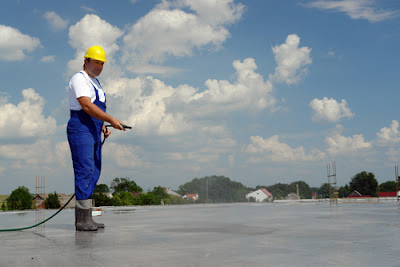SPONSORED
Function of Concrete Curing

Concrete Curing plays an important role on strength development and durability of concrete. Curing takes place immediately after concrete placing and finishing, and involves maintenance of desired moisture and temperature conditions, both at depth and near the surface, for extended periods of time. Curing is the hydration process that occurs after the concrete has been placed
Definition of Concrete Curing
Curing of concrete is defined as providing adequate moisture, temperature, and time to allow the concrete to achieve the desired properties for its intended use. Curing of concrete is done to maintain the Optimum moisture content (OMC) i.e. to prevent the loss of water which is required for the hydration of cement, to avoid shrinkage cracks and premature stressing or disturbance in concrete.
Hydration and hardening of concrete
Hydration and hardening of concrete during the first three days is critical. Abnormally fast drying and shrinkage due to factors such as evaporation from wind during placement may lead to increased tensile stresses at a time when it has not yet gained sufficient strength, resulting in greater shrinkage cracking. The early strength of the concrete can be increased if it is kept damp during the curing process. Minimizing stress prior to curing minimizes cracking.
Increase early and ultimate compression strength
High-early-strength concrete is designed to hydrate faster, often by increased use of cement that increases shrinkage and cracking. The strength of concrete changes (increases) for up to three years. It depends on cross-section dimension of elements and conditions of structure exploitation. Addition of short-cut polymer fibers can improve (reduce) shrinkage-induced stresses during curing and increase early and ultimate compression strength.

Increased strength and lower permeability and avoids cracking
Properly curing concrete leads to increased strength and lower permeability and avoids cracking where the surface dries out prematurely. Care must also be taken to avoid freezing or overheating due to the exothermic setting of cement. Improper curing can cause scaling, reduced strength, poor abrasion resistance and cracking.



